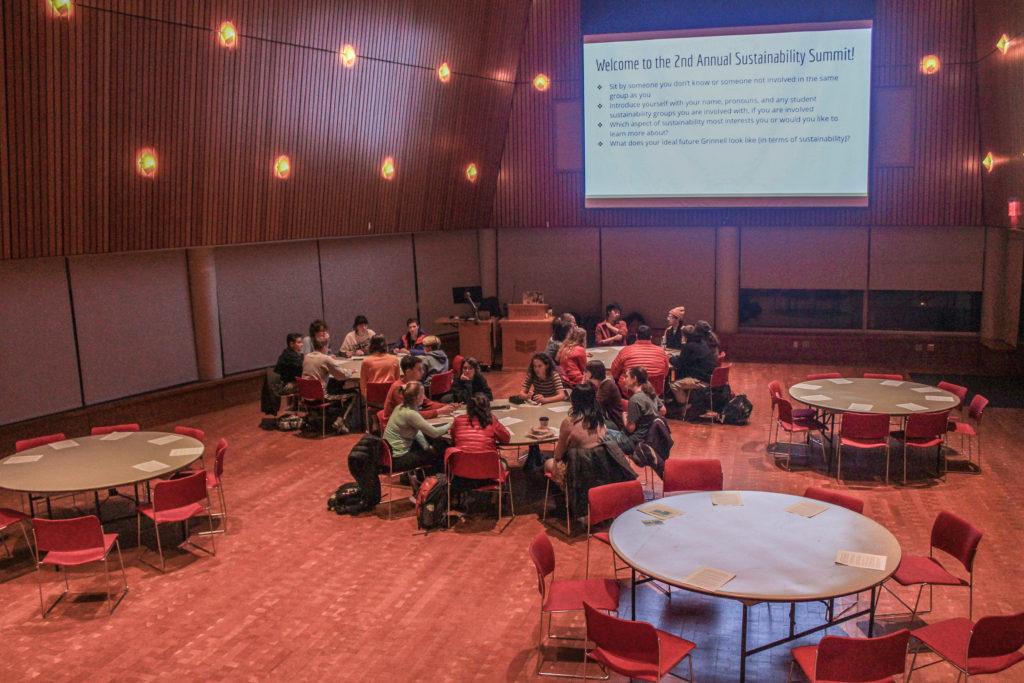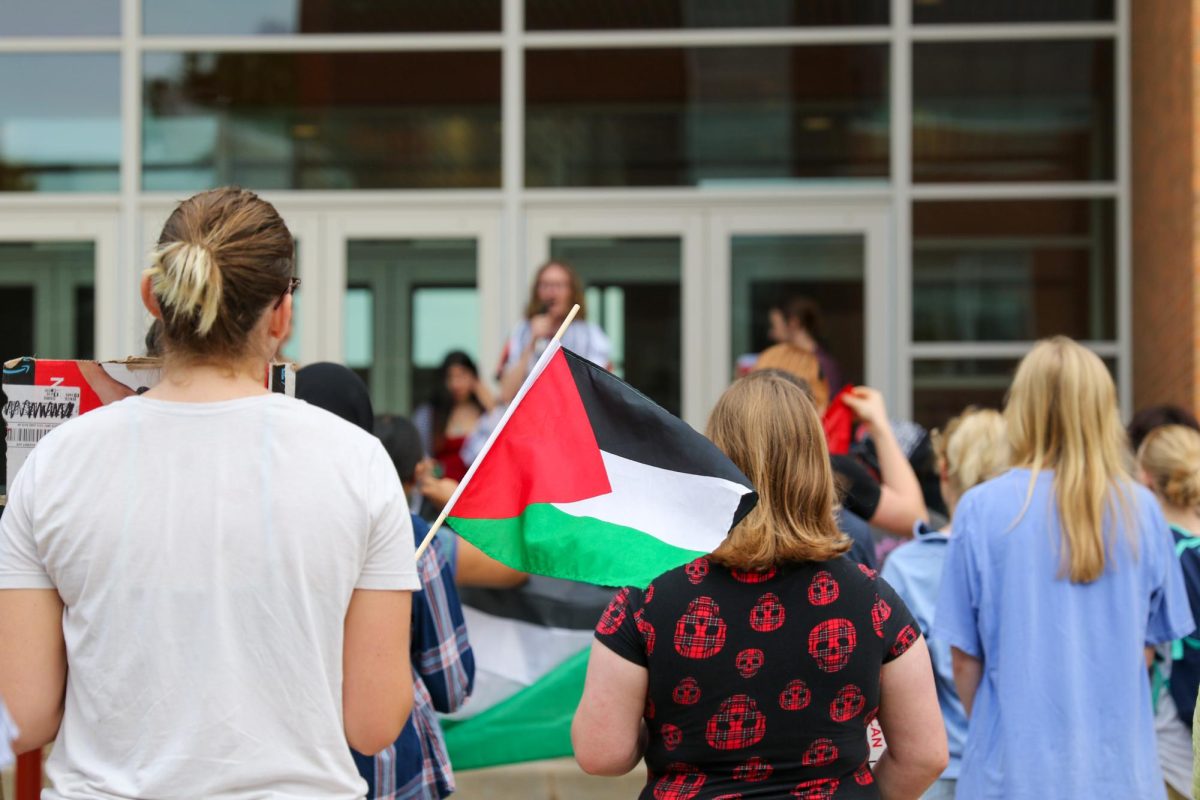By Zoe Kaufmann
kaufmann2@grinnell.edu
The Student Environmental Committee (SEC) and SGA’s Green Fund held Grinnell’s second Sustainability Summit on Wednesday, Nov. 6, bringing together Grinnell’s many different environmental groups to brainstorm project ideas and organize their efforts to make Grinnell a more sustainable institution. The summit involved representatives from ten different student groups, ranging from the SEC and Green Fund to Farm House, Sunrise Movement and Grinnell Intersectional Vegans.
Green Fund Chair Rachel Snodgrass ’21 organized the first Sustainability Summit last year. The 2018 summit involved presentations from each organization on their activities and goals, which Snodgrass and SEC Chair Duncan Ward ’20 felt wasn’t as collaborative as it might have been. Ward and Snodgrass adjusted this year’s format to fix this, replacing presentations with small round-table discussions which could then be expanded to the whole group. The organizers posed questions intended to spark conversation, like, “What projects do we need to work on to achieve your vision of an ideal Grinnell?”
The summit outlined common concerns between different groups, which spanned everything from sustainable agriculture and environmental justice to the looming threat of climate change. Attendees discussed institutional and individual change, questioning what sustainability-focused groups could do to change Grinnell and its culture. Suggestions included adding an event about sustainability to NSO, reducing water waste in dorms and expanding access to composting, among many others.
One group even joked about having a farming team rather than a football team.
Several participants were pleased with the results of the summit, citing the communal discussions as a source of ideas for the future.
“It’s really easy to walk into something and talk about everything that needs to be changed, and that’s it. What was different about this was that we got to the point where we had enough time to just come up with an actual concrete thing that we could get done,” Emily Louden ’22 said. “It’s a lot easier to have a check-off action item than a vague sense of wanting to change something.”
An additional purpose of the event was to outline the difference between the different groups to make them more accessible to students not currently involved.
“I want people to learn more and get excited about sustainability and figure out how they can make the changes that they want to see, and make the whole structure of making change on this campus less confusing and more accessible for people.” Snodgrass said. “When I was first getting involved in sustainability groups, I was really confused and overwhelmed and felt like everyone just knew more than me about how everything works here. It was very intimidating for me … so I’m trying to make things more accessible.”
One of the reasons for that confusion is that there are so many groups focused on sustainability on campus that serve different purposes and have different goals. While many of the organizations have distinct areas of interest—Sunrise Movement organizes students for climate activism, while IOWATER gathers water quality data and Grinnell Intersectional Vegans promotes veganism—others are more nebulous. For example, students interested in promoting sustainability within Grinnell College can get involved with the SGA Green Fund, the non-SGA Student Environmental Committee or the faculty- and student-run Sustainability Committee.
“This, to me, is a critical issue at the heart of the efficiency of student action around sustainability, this concept of many groups addressing the same thing. I think there is space for niche groups and groups that are connected to wider organizations, so I think that’s appropriate,” Ward said. “But when you’re looking at addressing sustainability institutionally and through education, awareness, both students and faculty, the structure that we have right now I do not think is appropriate for doing so efficiently in a matter that reduces overlap.”
This year, Snodgrass and Ward have made a concerted effort to differentiate the SEC, which works more directly with students in leading outreach efforts and raising awareness of sustainability issues, from the Green Fund, which is an SGA committee that allocates money to sustainability projects, Snodgrass said. Ward is also working with Facilities Management to create an overarching organizational structure. For now, the network of different groups isn’t perfect, but it works well to address the diverse issues that sustainability encompasses, Snodgrass said.
“There’s a lot of different buckets underneath sustainability. Each group is doing one thing. Part of that is it’s a lot more manageable and easier to see progress when you’re only focusing on one aspect of sustainability because it’s a huge structural issue throughout almost every part of our society,” Snodgrass said. “Breaking it up … makes it a lot easier to see change, make change and focus on one goal. And it also just makes getting everyone together easier.”
Despite the variety of groups represented, most attendees agreed that Grinnell’s community values and claim to an ethos of social justice made more environmental action necessary.
“Regardless of who you are, climate will impact you. Privilege, no privilege, white, not white, whatever you are, whoever you are, it’s going to impact you. As a school that prides itself on being a social justice school and as a school that does have the resources to actually enact change, we should be part of the foreground of creating that change,” Hannah Malicky ’22 said. “We should practice what we preach.”























































